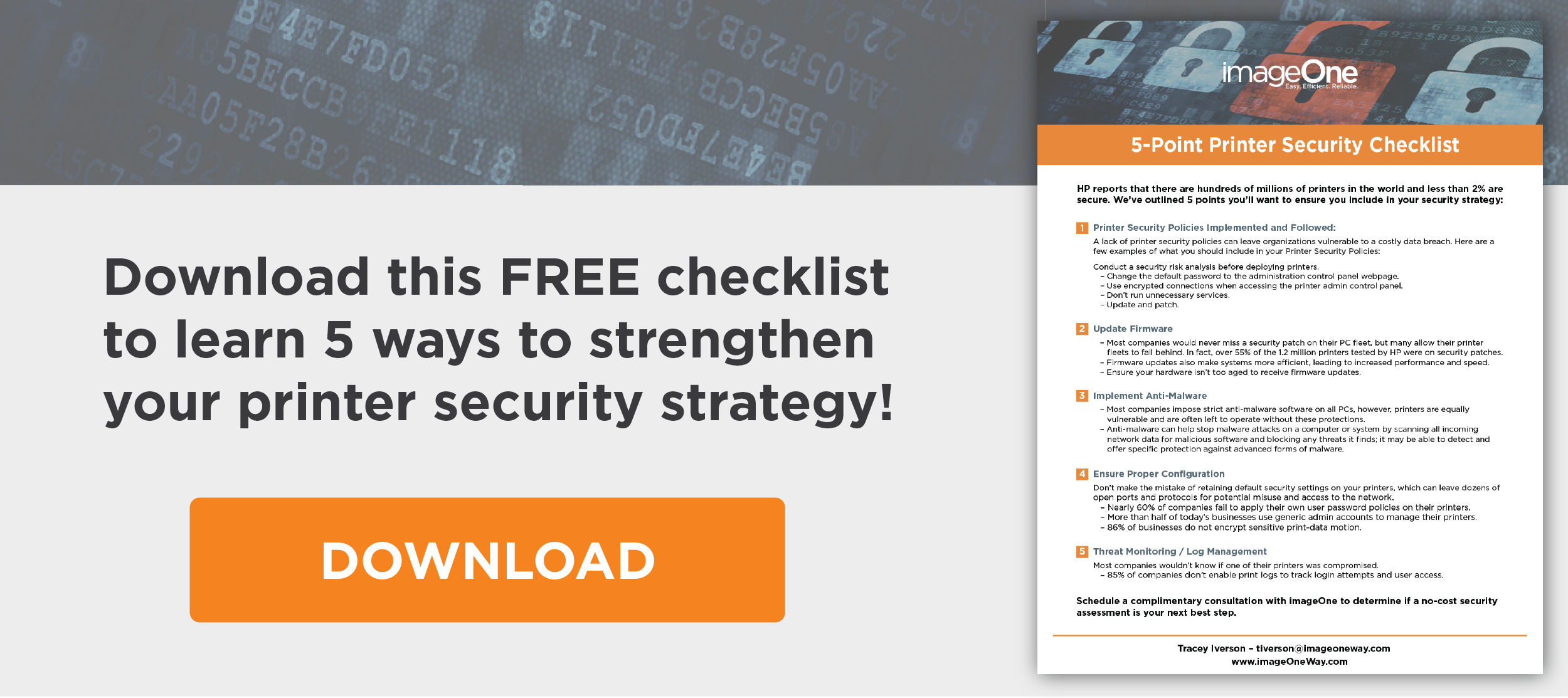A lack of IT security is a serious problem for any company. Unfortunately, it’s one we see surprisingly often considering the damage a single hack can cause.
Thankfully, protecting your organization is easier than ever. By proactively defending your network and devices from cyber threats, you’ll set your entire team up for success and enjoy true peace of mind.
Here are five simple ways to boost security across your organization:
1. Limit Physical Access to Servers
In 2019, an estimated 20% of all data breaches were caused by employees. Whether accidental or intentional, these breaches were almost always due to a lack of internal control. By accessing servers, hackers can dig into your personal and private information.
To prevent internal security breaches, proactively limit access to sensitive information by making it impossible for non-authorized users to get into your servers, applications, and data information. Start by working with department heads and together decide who actually needs full access. Then, set up strong data security protocols that allow only entry to authorized users.
Also, ALWAYS include third parties—like vendors or service partners—when considering who has access. Do they all really need access to your server. If so, still build protections to ensure that a bad actor on their end can’t get in.
2. Perform Code Obfuscation
One of the best things about working in IT is how often you get to say the word “obfuscation.” It’s one of the little things that make the job great. Code obfuscation is the act of making source or machine code more difficult to understand, and thus making it more difficult to reverse engineer and hack.
Take a moment to review what languages your company’s most essential applications are written in. Now, by running a corresponding code obfuscation program like Javascript Obfuscator or SwiftShield, you can almost instantly make them more secure.
Quick Note: Most Android applications are written in Java, which, due to how it is compiled into byte code in a class file, is easier to hack than C/C++ applications. A code obfuscation program like ProGuard can work for Java class files, but we recommend you combine this process with other methods of heightening security.
3. Launch an Internal Phishing Campaign
Phishing, in which a hacker misleads a target into giving them private information usually via email, is a HUGE office security issue. In 2020, it made up for 22% of ALL data breaches. On average, each attack cost the business a loss of 1.6 million!
Want to avoid becoming part of the 22%? Then it’s time for an experiment with an internal phishing campaign! This is a fantastic way to get a genuine sense of your employees’ current security prowess. You’ll also learn how effective your current security education programs are.
To conduct an internal phishing campaign, purposely (and secretly) send out a message to your employees that mimics a legitimate phishing email. Then, take note of how many people click the link and give away personal information, as well as how many people follow proper protocol and report the suspected phishing email to IT.
Don’t get the wrong message: we’re not suggesting you scam your employees! Instead, this entirely fake campaign—a fire drill in a sense—is a smart way to gather real-world data on how security-savvy your employees are. It will also add urgency to your security education efforts.
Whether the results are positive, concerning, or somewhere in-between, you’ll be amazed at what you’ll find. Then, by learning from the results, your team will be better equipped and informed in helping everyone become an ally—not a liability—in your fight for security.
4. Double Down on Security Education
While phishing campaigns can offer a solid baseline read of how much employees know, it’s essential to supplement that with ongoing educational programs regarding up-to-date workplace and device security.
Teaching every employee on best data security practices and protocols at the office must be an integral part of your overall strategy. It also must be ongoing as hackers constantly learn new ways to break into company servers. In short, what may have worked to keep them out last year might not be as effective anymore.
Different companies can offer security education in different ways. Though it should always be part of the initial onboarding process, many IT teams choose to host annual seminars to refresh their team member’s security memories. Online courses, like KnowBe4, are also growing in popularity.
Here are a few things that your workplace data security education plan should cover:
- Which programs employees can install on their devices to boost security like PaperCut, HP Security Manager, and Laserfiche.
- How to create strong, secure passwords
- What suspicious links within emails look like
- How to securely back up work onto the server
- When to report a potential security breach to IT
- Why employees shouldn’t connect to servers with unsecured devices
5. Prohibit Wi-Fi to Unapproved Devices
Improperly configured Wi-Fi connections create one of the easiest openings for cyberattackers to infiltrate your company. However, it’s relatively simple to build bulletproof protection around your office’s Wi-Fi connections.
First off, tougher password protections alone can significantly enhance data security at your business if you have a Wi-Fi connection.
Always limit access to only approved desktop computers, laptops, smartphones, and other devices using a secure password. Frequently change the Wi-Fi password so that “one-time guests” can’t give it to someone with malicious intent and later access your network from, say, the parking lot.
We also encourage IT to require team members to regularly change their own passwords. Some employees might groan at the added hassle, but it can massively decrease the chances of a data breach.
Devices directly connected to the network can also act as a gateway for hackers to steal information, especially if your company follows a BYOD (bring your own device) model.
These devices—often laptops, tablets, and smartphones—are often unsecured and portable. This increases the risks of them entering an unsecured environment, like a coffee shop, with a device filled with private company information. It’s then easy for malicious third parties to sneak in and steal that precious data.
While prohibiting certain devices from connecting to your server can be difficult, if the budget permits, providing work-specific phones and computers with proper security settings in place is the safest way to protect your business.
If this isn’t possible, then just be sure to keep your passwords strong, server secure, and teach your team how to work safely within the office. With just a little elbow grease, you can combat security risks in your workplace fast!
Want support in integrating these strategies and more? Contact the friendly office security experts at imageOne! Together, we’ll develop a custom plan that’ll keep your business safer than ever!
A lack of IT security is a serious problem for any company. Connect with me on Twitter and LinkedIn and keep up with my company imageOne. Check out my website or some of my other work here.





